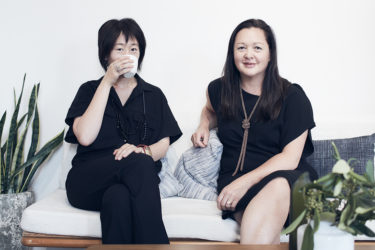
Kayoko Kubo and Melissa Chen, MI.KA Studio. Photography by Christine Francis.
Melbourne-based design duo, Melissa Chen and Kayoko Kubo of MI.KA Studio lift the veil on this increasingly abstract concept.
Since launching the Fitzroy-based MIKA Studios in 2015, interior designer Melissa Chen and architect Kayoko Kubo have built an impressive nationwide portfolio consisting primarily of large-scale hotels, retail and residential projects. Chen and Kubo each ran their own practice – Mill Interiors and Kubo Architecture, respectively – before deciding to collaborate on this venture, which has experiential design as its driving ethos.
Story continues below advertisement
For the small team, the focus is on creating calm, sensory spaces that elicit a particular feeling. As Kubo explains, “We want people to respond to beautiful details and the thoughtfulness of the design; to have an emotional response, even if they don’t realise they’re having one.” The co-directors believe the most conducive fit-out for producing such sensory environments is one that’s not overdesigned. As a result, MIKA Studios’ interiors are as refined in aesthetic as they are robust in concept, underscored by a sophisticated minimalism.